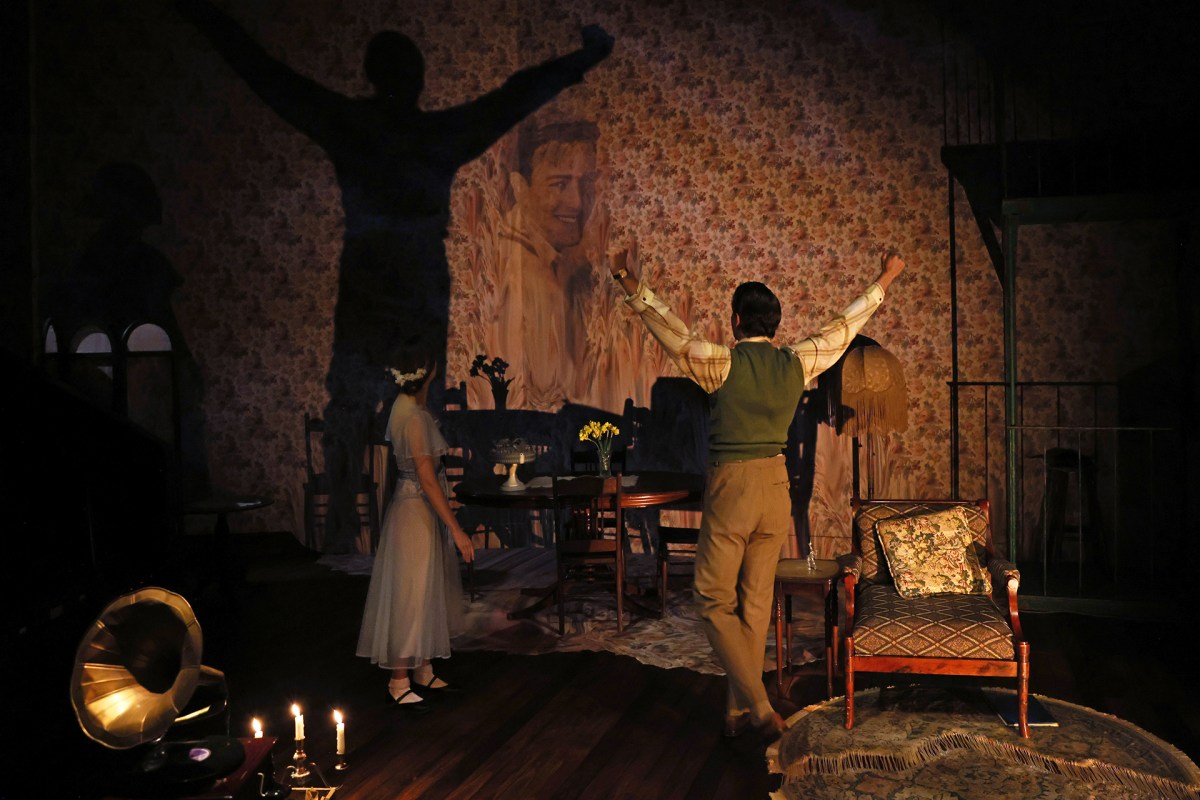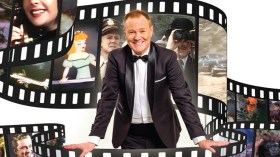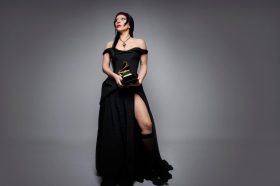Ensemble Theatre’s new production of Tennessee Williams’ The Glass Menagerie is transcendently directed by Liesel Badorrek, and explores the heights and depths of family drama.
Matriarch Amanda Wingfield (a formidable and funny Blazey Best) describes her daughter Laura’s collection of delicate animal ornaments as a “glass menagerie”. Laura Wingfield (Bridie McKim) is herself “like a piece of translucent glass” and at first seems too fragile for the grime, jostling and clumsy encounters of the real world.
The set shows the Wingfield’s 1930s St Louis apartment as worn and ‘homely’. It reveals their straitened circumstances, but is also a refuge (of sorts) for Amanda, son Tom and, particularly, Laura.
Amanda spends her days unsuccessfully hustling on the phone. Bossy and overpowering, she epitomises faded Southern glory. Best brings her character to life with sharp comic timing and a verve and sincerity that tempers Amanda’s destructive maternal possessiveness.
McKim, a disability advocate and actor with cerebral palsy who starred in the TV series The Heights, plays Laura. She balances the character’s childlike shyness and reclusiveness with an inner glow, a subtle but earthy appreciation of people’s foibles, and an awakening of confidence and future possibility.
While looking through her old yearbook and reminiscing about her school days, Laura confides that she liked a boy. Jim sang beautifully, was kind to her and affectionately called her ‘Blue Roses’ after mishearing ‘pleurosis’ when he asked why she was absent from school.
The role of Tom Wingfield (played with versatility by Danny Ball) is complex. He is a son, brother and workmate as well as narrator. Is he duplicitous, leading a seedy life while supposedly at the movies, or is his behaviour simply that of a young man rebelling against his mother’s nagging? Ball effortlessly inhabits Tom as he pivots between discontent and an understated compassion. While often intolerant of his family, he does feel loyalty towards his mother and, like many siblings, seems to treat Laura offhandedly to belie his deep love and protective fear.
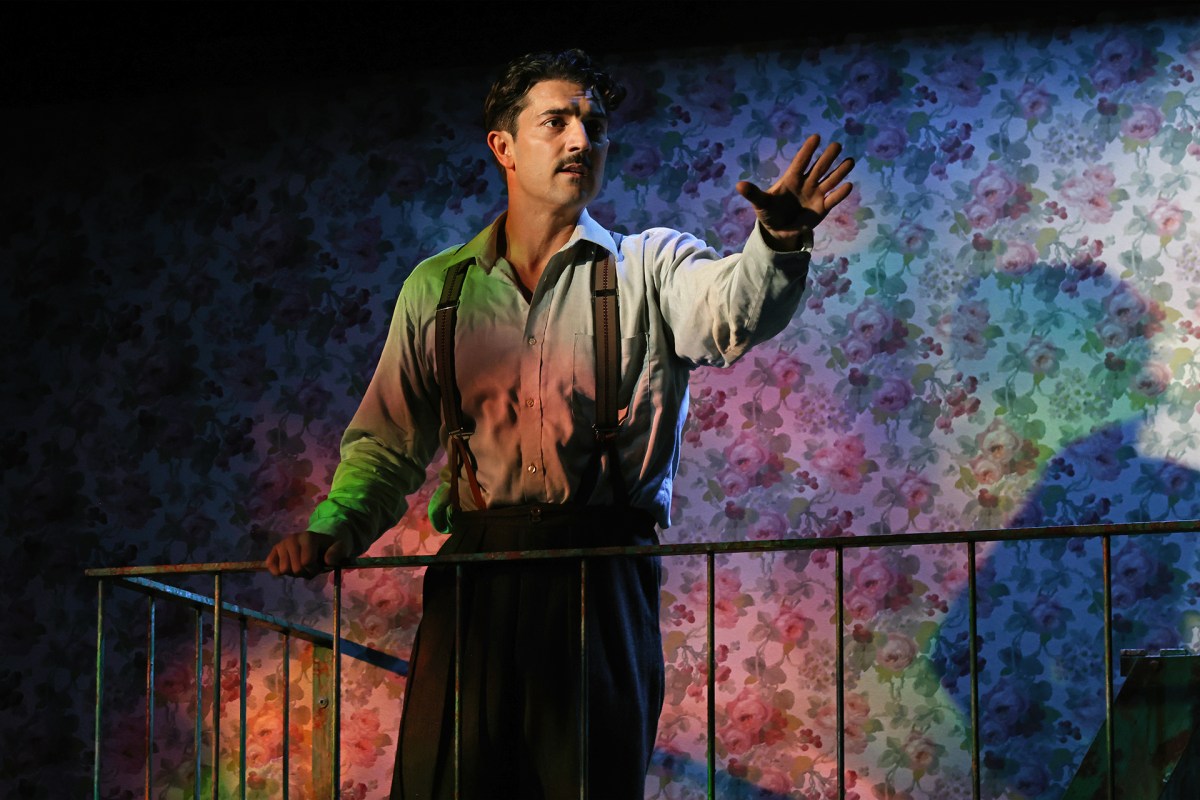
As the only male in the family, Tom lives under the literal picture and metaphorical shadow of his absent father, an absconding bounder.
A large painting of the father is the focal point of the backdrop that is otherwise covered in florid wallpaper. The portrait’s looming presence over the family is ominous, particularly its lower section that looks to be liquefying like molten glass onto the ground. Although conceptually clever, the painting is executed poorly: the production’s only misstep.
In contrast, shadows are used effectively and sometimes ingeniously, as when Tom stretches and expands his arms like wings in anticipation of his future.
Tom spends time smoking on the upstairs terrace, a retreat from his mother’s cloying domain. Accessed by a scaffolded fire escape, it effectively conjures the ‘outside’ although is later transformed into a prison-like cage through clever lighting.
Verity Hampson’s lighting is deceptively simple but crisp and potent. When Tom brings Jim O’Connor (Tom Rodgers) – his warehouse workmate and a potential beau for Laura – home for dinner, the men are cleanly illuminated in the auditorium aisle (a deft extension of the performance space). By turns agonising and comedic, Laura keeps them waiting before opening the door. This interaction and other interludes performed in slow-motion seamlessly enhance the production’s dramatic tension and flow.
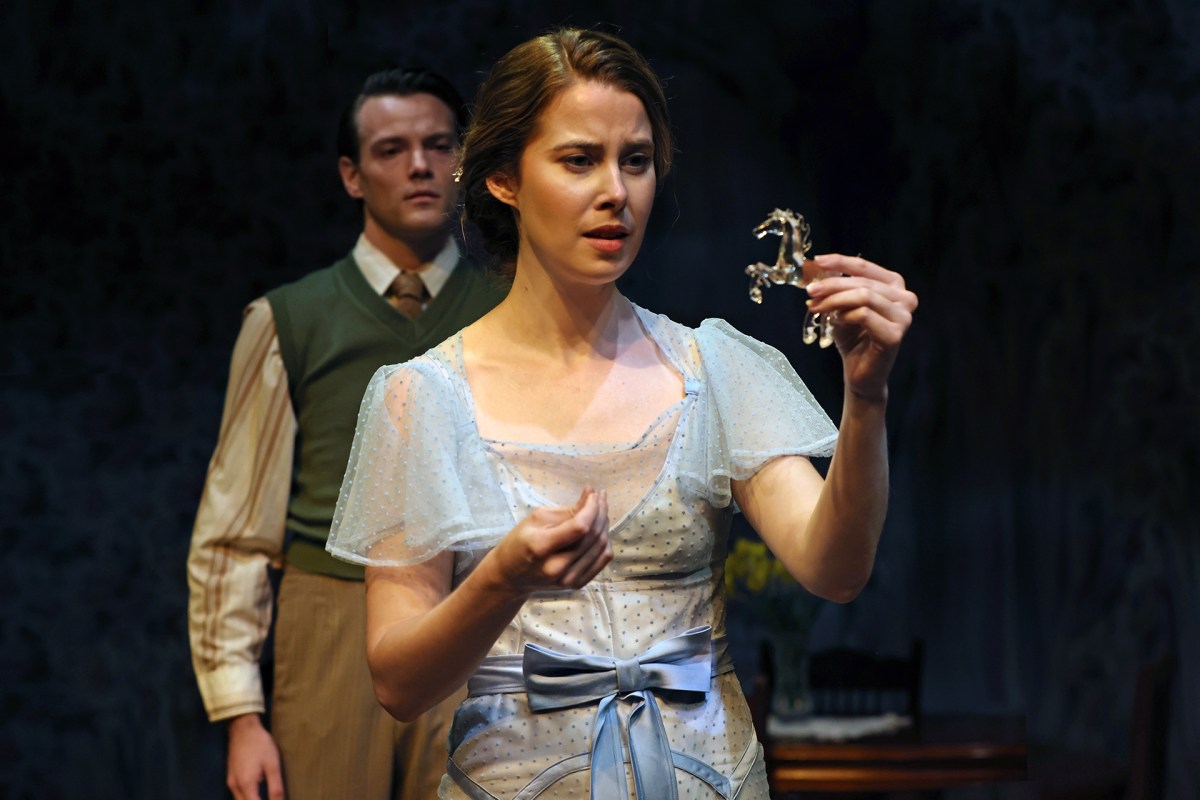
Rodgers is charismatic in the role of Jim. Worldly yet vulnerable, he charms Laura. He signifies the nostalgic past, but is also an outsider who represents the possible calamity of the real world and acts as a catalyst for a new life.
In a poignant vignette, Jim encourages Laura to dance with him. Recorded music by Maria Alfonsine and Damian de Boos-Smith embody the era and mood. The most evocative piece is the ‘tuning notes’ of the cello that are perfectly synchronised with Amanda’s fussing and fine-tuning of Laura’s waiflike, transparent blue dress.
The glass menagerie itself is the play’s translucent illusion and symbol. It touches and changes all the characters and their relationships. It consoles, shines and continues to spin.
Read: Theatre review: Fighting, New Theatre
The director and cast have exceeded the script with multifaceted characters who expose their hurts and fear while revealing their inherent warmth and humour. They all provoke multiple laughs.
Ensemble Theatre’s The Glass Menagerie brings a classic play to an appreciative audience through its intelligent, artistic portrayal of a struggling family who try to replace pain and disappointment with as much love, kindness and hope that they can muster.
The Glass Menagerie by Tennessee Williams
Ensemble Theatre
Director: Liesel Badorrek
Set and Costume Designer: Grace Deacon
Lighting Designer: Verity Hampson
Composer and Sound Designer: Maria Alfonsine and Damian De Boos-Smith
Dialect Coach: Linda Nicholls-Gidley
Intimacy Coordinator: Chloë Dallimore
Costume Supervisor: Lily Mateljan
Stage Manager: Krystelle Quartermain
Assistant Stage Manager: Lara Kyriazis
Cast: Danny Ball, Blazey Best, Bridie McKim and Tom Rodgers
Tickets: $40–$90
The Glass Menagerie runs from 21 March to 26 April 2025 at Ensemble Theatre, Kirribilli, Sydney.
